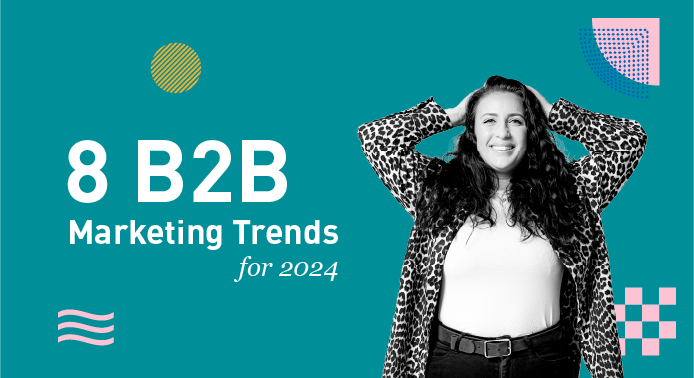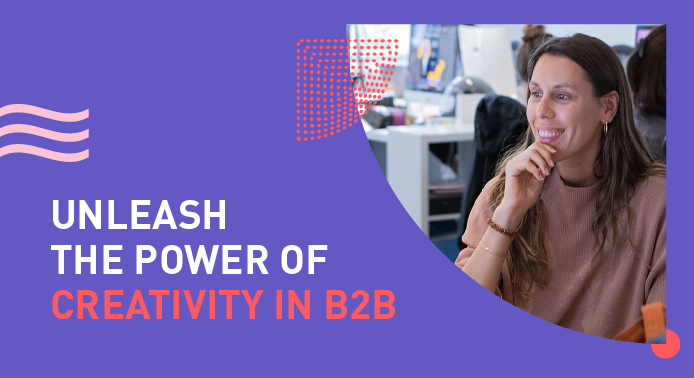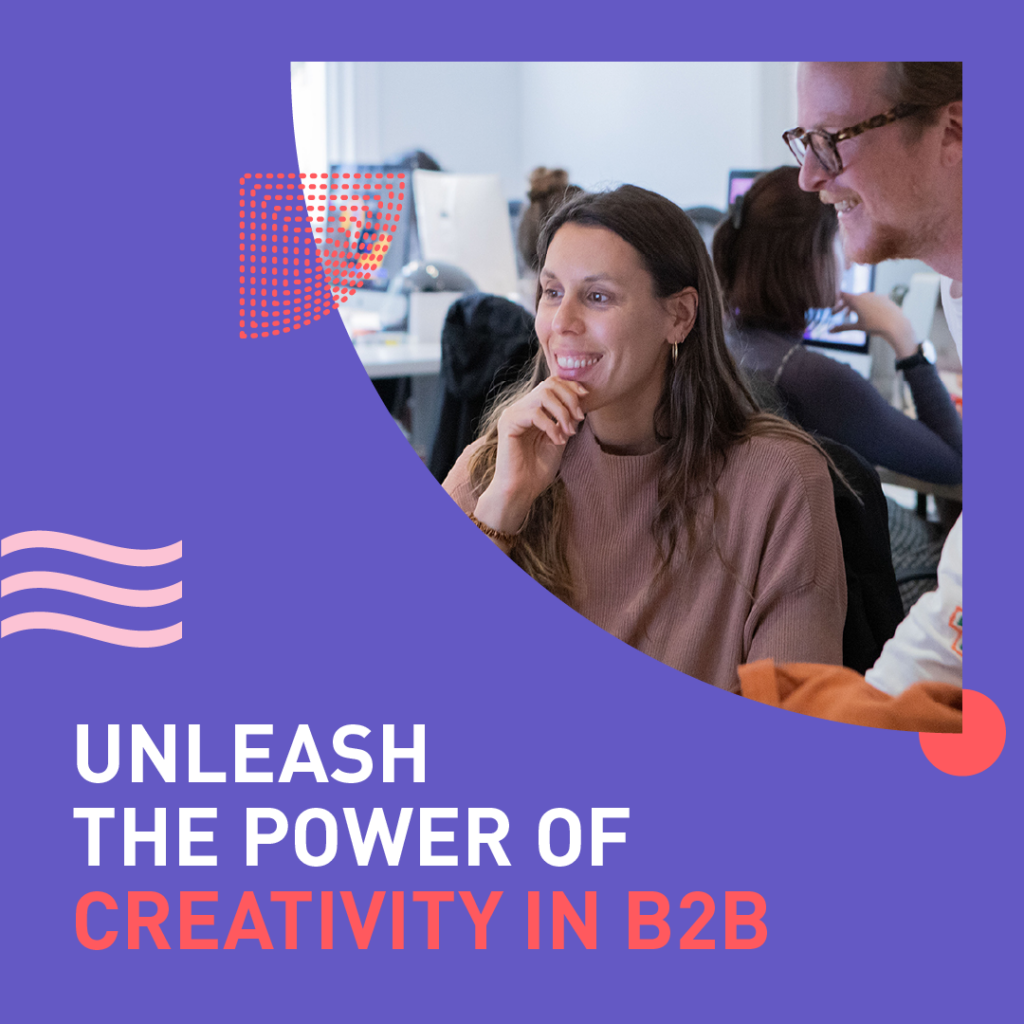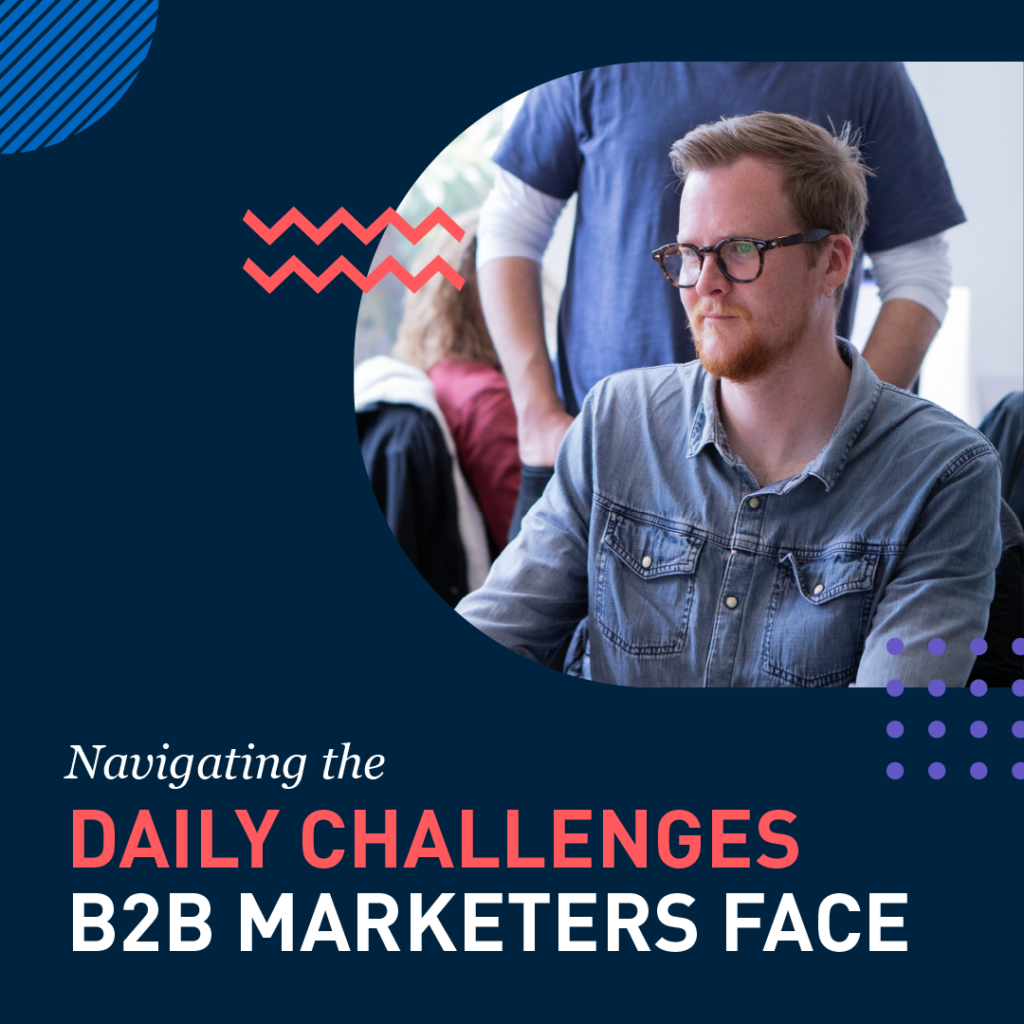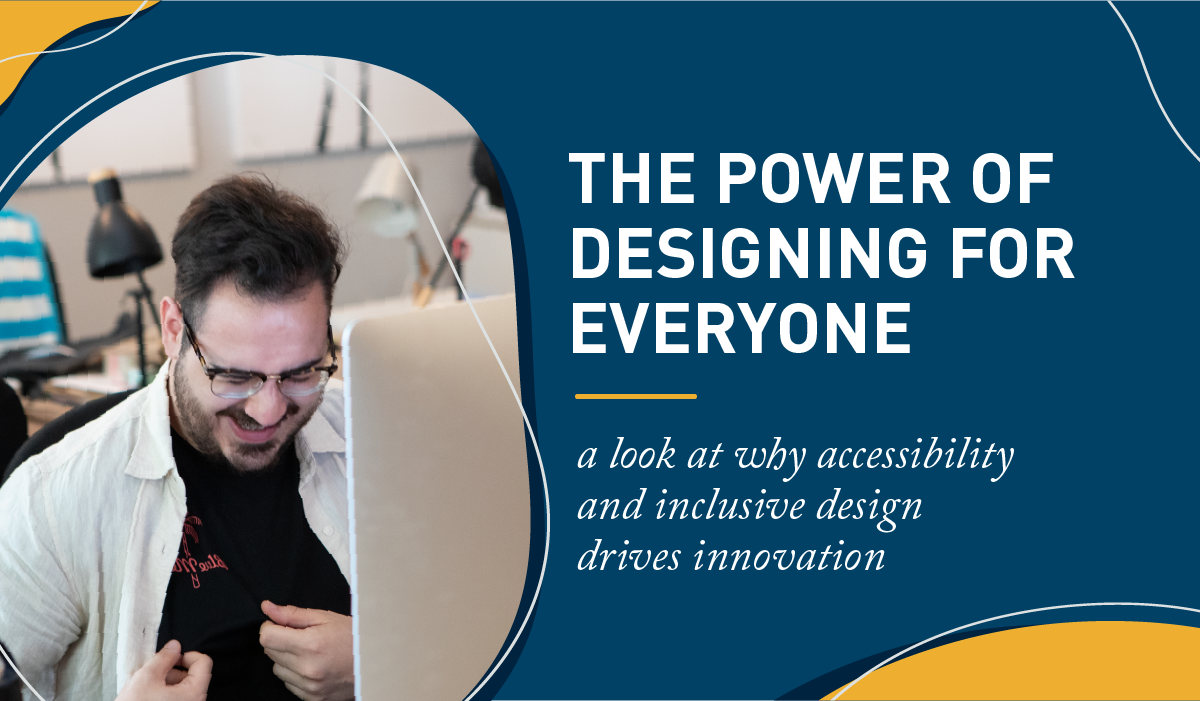
Remember the world without online shopping, Siri, and reverse parking sensors? Sure, we survived, but there’s no denying these technologies have enhanced our lives in ways we couldn’t imagine. These features don’t just help people with mobility or hearing issues – they make everyone’s lives easier. The world’s largest companies, especially in Silicon Valley, have long championed the need for more inclusivity in design – not only to make a certain proportion of the population’s lives easier, but to boost innovation overall. Instead of being a design afterthought, considering how you can make your designs “one size fits one” instead of “one size fits all” enriches the creative process.
We at BlueMelon advocate for curiosity, ingenuity and human-centered design and content creation – and accessible, inclusive design is a big part of driving innovation. Keep reading to explore why we believe designing for a more inclusive world is no longer ‘optional’ for companies.

Design tends to attract people who want to improve the world or help others understand the world. Unfortunately, the reality is that most creators assume who they’re designing for is able-bodied. We need to stop designing for the hypothetical “average user.” 15% of the world’s population has a disability according to the latest UN stats. When combined with friends and family, disability affects 73% of consumers. But currently, the large majority of disabled people consider their experiences to be a failure. There’s an opportunity there! Designers have a responsibility to remove barriers and challenge their assumptions of what is normal.
Audiobooks for example are a solution for the vision-impaired, and are soaring in popularity worldwide. Solutions which have a huge impact on the lives of one community will also benefit society as a whole.

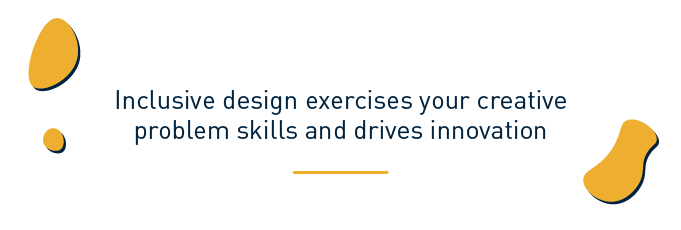
Designing in an inclusive way allows you to ask more questions, do more research and exercise your imagination and creativity in a way that spurs innovation. It promotes opportunities for collaboration and bringing everyone together. There are diverse user needs and you want to perpetuate inclusivity. For example, differentiating with colours is not always a good idea as people perceive colours in different ways – even something as crucial as traffic lights. How can we as designers and creators promote independence and opportunity? How can we be more inventive and craft beautiful solutions which serve the greater good?
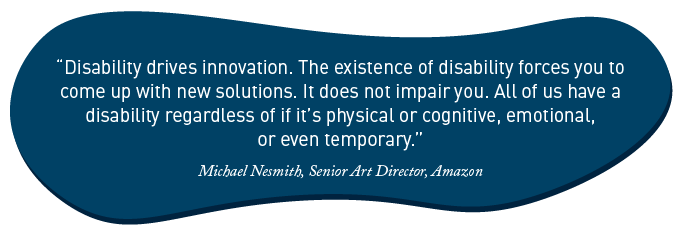
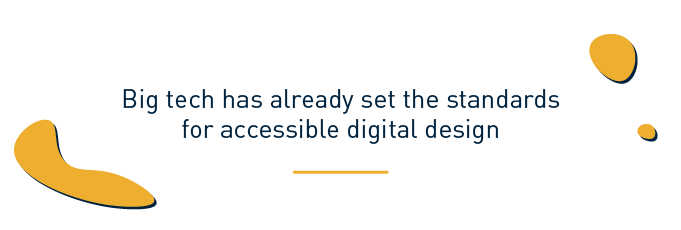
Most large tech firms these days have already shown they’re serious about inclusive and universal design by creating specialised roles and hiring titles such as “chief accessibility officer” or “head of brand accessibility.” It’s now included in corporate social responsibility, and extends beyond the built environment. People with disabilities need to be more involved beyond user research. Alt text, audio captions, and voice recognition on websites are all examples of digital inclusion. Xbox has launched an adaptive controller for people with limited mobility. On a more foundational level, schools such as Stanford University have included accessibility and design principles in their academic curricula for computer science and design programs.
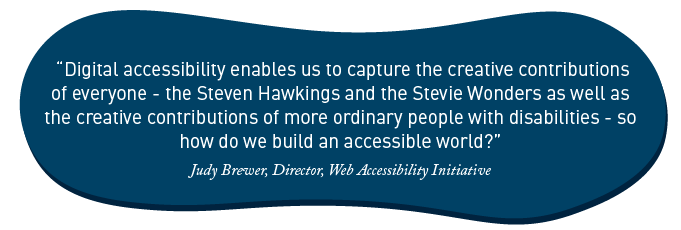
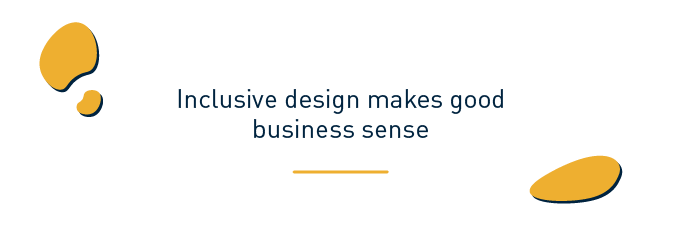
If you still can’t convince your team or wider company to invest in inclusive design – with a nod to Jerry Maguire – show them the money! The market of people affected by disability (primary or secondary) controls over $13 trillion in disposable income. Social values notwithstanding, from a business perspective, it’s much more efficient and cost-effective to make a streamlined interaction instead of having a myriad of user experiences. By attending to the needs of the most marginalised, we create a product experience which satisfies maximum market demand. We’re all for knowing your niche and empathising with your audience at BMD. You simply can’t afford to cut out a whole chunk of society from wanting to use your product, or interact with your creations.
Designing for everyone, with accessibility and inclusion in mind, involves a constant process of asking questions in an attempt to push the boundaries of design as we know it and leave no user behind.
Anything we missed out? Send us a DM!
Antigone Anagnostellis works at Bluemelon Design, which is proud to be a Linkedin Partner creative agency with a number of countries around the world. You can join the Blummie community here.

